
When Anawangin became a go-to camping spot, other coves along San Antonio’s coastline were also “rediscovered”. Another popular camping spot in this part of Zambales is Nagsasa Cove. It’s like Anawangin’s quieter sister located a little further from Pundaquit.
WHAT'S IN THIS GUIDE?
About Nagsasa Cove
We’d like to cover this as soon as possible in this travel guide: Nagsasa Cove shares many similar features to Anawangin. It used to be a typical rocky coast until it was transformed to this paradise after Mount Pinatubo erupted in 1991. Today, its shores are covered by volcanic ash, just like its nearby coves Anawangin and Talisayen. It is also lined with Agoho trees which resemble pine trees, giving it a very unique vibe. The cove is surrounded by hills making the view not just more relaxing, but also postcard-worthy. And if you want to get a different vista of Nagsasa, you can climb one of the hills to get an even more breathtaking view of the cove from above.
Although it is very similar to Anawangin, Nagsasa has kept its more peaceful and relaxing feel because it doesn’t get as crowded as Anawangin. And even though more and more tourists and campers are drawn to Nagsasa, it still doesn’t get too crowded. This may partly be due to the fact that Nagsasa is a little bit farther than Anawangin from Pundaquit, which is the jump-off point. So the boat ride to get here is longer and costs a bit more. While it is also possible to reach Nagsasa by land, it is difficult so the main gateway here by sea.
In this Nagsasa Cove Travel Guide, we’ll cover how to get there, tour packages, where to eat, where to stay, and the best time to go!
How to Get There
Nagsasa is accessible whether you’re driving or taking public transportation. It is quite easy to reach this stunning destination from Manila. First, you need to make your way to Pundaquit in San Antonio, which serves as the jump-off point. If you’re bringing a car and driving to Zambales, you can simply use Waze or Google Maps. Just enter Pundaquit, San Antonio as your destination. If you’re taking public transportation, just follow these directions to get to Pundaquit from Manila.
Manila to San Antonio
Private Car
If you’re traveling with a group, driving to San Antonio might be the most ideal, especially if you plan on going camping. The fastest way to get there is by taking the North Luzon Expressway (NLEX). Nowadays, it’s easy to navigate with the use of Google Maps or Waze. Just input San Antonio Public Market or Pundaquit in San Antonio Zambales as your destination.
- From North Luzon Expressway (NLEX), take the exit to Olongapo and merge onto Rizal Highway.
- Turn left towards Burgos Street, then turn right to Canal Road.
- Continue driving onto Dewey Avenue.
- Turn left towards RH5 National Highway or Bugallon Road.
- Take a left turn towards San Agustin Road. Your landmark is Castillejos Water District.
- When you reach the Barangay Hall of San Antonio, turn left.
- Turn left towards San Marcelino – San Antonio – San Narciso Road.
- Turn left towards Evangelista Street and turn right on the third intersection going to Evangelista Street.
- Turn left to San Nicolas and drive straight to Pundaquit Road.
NOTE: If you’re heading to the market, make a right turn before you reach the San Antonio Police Station along San Marcelino – San Antonio – San Narciso Road.
Public Transportation
1. MANILA TO SAN ANTONIO, ZAMBALES
From Metro Manila, hop on a bus bound for Iba or Santa Cruz and get off at San Antonio Public Market. Fare depends on which terminal you’re coming from and the type of bus. The usual bus terminal locations are listed below.
- Sampaloc
- Cubao
- Pasay
- Caloocan
Fare Range: P350 – P400
Victory Liner and Cisco Bus Co. has regular trips from Manila to Zambales. Victory Liner has multiple terminals all over the metro while Cisco shares a terminal with Five Star Bus in Cubao and Pasay.
For the complete schedule for all terminals, you may check our Manila to Zambales Bus Schedules & Fares article.
If you’re coming from Clark, La Union, or Baguio, you may check our How to Get to Zambales article for a detailed guide.
2. SAN ANTONIO TOWN CENTER TO PUNDAQUIT
From San Antonio Public Market, ride a tricycle to Barangay Pundaquit. Let the driver know you’re going to Nagsasa Cove and he’ll know where to drop you off. Travel time is around 15 to 20 minutes. The fare is P40 per person.
Pundaquit to Nagsasa Cove
By Sea
From Pundaquit, you can get to Nagsasa Cove by hopping on a boat. You can either rent a boat to take you to Nagsasa or book an island hopping tour package to see other nearby islands and coves like Camara Island, Capones Island, Anawangin Cove, and Talisayen Cove.
For a smooth experience during your trip, we recommend booking a boat or an island hopping tour in advance. Many tour operators and agencies offer boat rentals to Nagsasa or island hopping packages in San Antonio. On our recent trip, we booked an island hopping tour with Nagsasa Cove Zambales on Facebook. Boat rates depend on whether you’re going on a day trip or an overnight stay and which islands and coves you want to include in your itinerary. You will find more details on the boat rates on the next section of this article.
By Land
Mountaineering enthusiasts will often traverse different mountains like Mount Balingkilat and Mount Bira-Bira (which is also called Mount Nagsasa) to eventually reach the cove. These two hikes have vastly different difficulty levels. For example, Mount Balingkilat is often touted at a seven (7) out of nine (9) while Mount Nagsasa is said to be mildly difficult at Level 3. While we want to make this Nagsasa Cove Travel Guide as extensive as possible, we haven’t really tried hiking yet! We’ll make sure to update you guys once we make the trip via hike!
Pundaquit Boat Rates
It cost us P3,500 for a day tour island hopping trip in San Antonio. The boat we chartered can accommodate four (4) people so if you’re traveling with a group, you can split the cost. Our itinerary included the following stops:
- Camara Island
- Nagsasa Cove
- Talisayen Cove
- Anawangin Cove
However, you may choose to change this itinerary depending on your preference. You can also choose Silanguin Cove or Capones Island in place of other stops. If you prefer to just go on a day trip to Nagsasa, the boat rental from Pundaquit costs P2,500 and is good for up to four (4) pax.
Day Tour Boat Rates:
- Island Hopping – P3,500 (good for up to 4 pax)
- Pundaquit to Nagsasa – P2,500 (good for up to 4 pax)
If you’re planning to stay overnight to go camping, you can also book a tour package which includes roundtrip boat transfers, entrance fees, meals, and tents. Just make sure to check the itinerary and inclusions first before booking so you know what you could expect.
Among the many tour operators in San Antonio is Nagsasa Cove Zambales on Facebook. We booked our island hopping tour with them on our recent trip, but they also offer boat rentals and tour packages. Here are their prices for tour packages in Nagsasa.
Nagsasa Tour Packages
Nagsasa Cove (2 Days, 1 Night)
- Solo: P3,000
- 2 Pax: P1,800/head
- 3 Pax: P1,300/head
- 4-5 Pax: P1,100/head
Among the inclusions of their package are the following:
- Rountrip boat transfers
- Entrance fee to Nagsasa Cove
- Island hopping to Capones Island
- Tent (for sharing)
- Drinking water
- Charcoal
- Use of cooking utensils
If you notice, the price is cheaper per person if you’re a big group. So if you’re on a budget, it’s best to go with friends if you’re on a budget. I mean, the more the merrier, right?
Where to Stay
While there are resorts in Nagsasa, there’s no full service hotel or resort here. What they have are just basic accommodation or tent rentals. But if you plan on going camping, we suggest just bringing your own tent and paying the tent pitching fee. If you read a different travel guide, it may also tell you that the one resort you can find in Nagsasa Cove is Marahuyo Cove. They have different types of rooms available if you prefer to be more comfortable and have access to your own bathroom. Here are their rates.
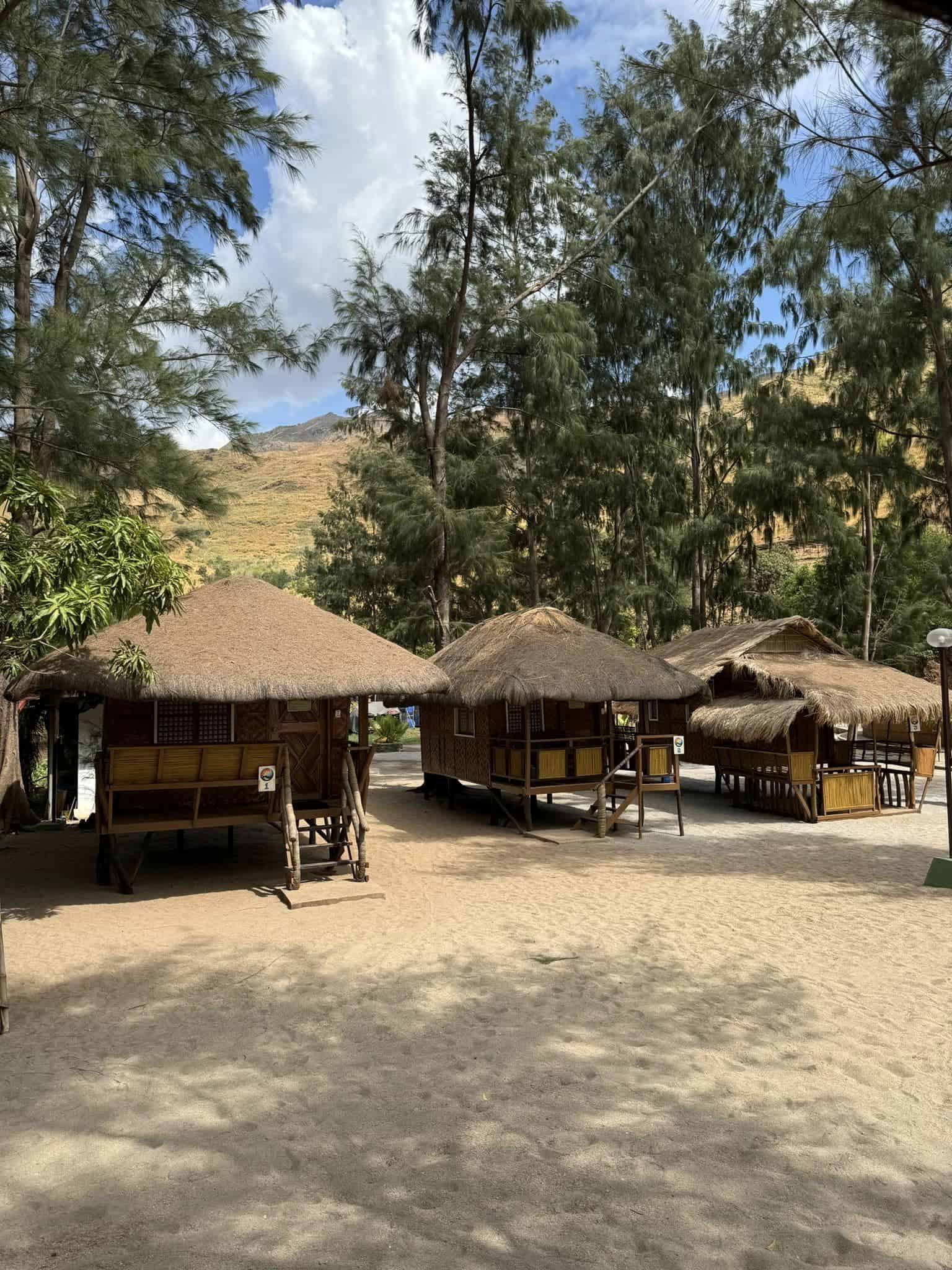
Marahuyo Cove
Room Rates
- Kubo Room – P7,688
Good for 4 Pax - Beach Front Room – P7,688
Good for 4 Pax - Hilltop House – P9,688
Good for 4 Pax
NOTE: The room rates indicated above are weekend rates. Marahuyo has different weekday and holiday/peak season rates. For inquiries and reservations, you can reach out to Marahuyo Cove’s official Facebook page.
Tent Pitching Fee
- Small – P300/night
2-4 Pax - Medium – P500/night
5-8 Pax - Large – P700/night
9-12 Pax
Below are the entrance fee and the cottage rental charge:
- Entrance Fee: P350/head
- Open Cottage Rental: P1,000
San Antonio and Other Beach Towns
If you’re looking for a resort or hotel that offers a bit more comfort, there are a lot of accommodation options in San Antonio, especially in Barangay Pundaquit. Being the jump-off point to Nagsasa Cove, it’s one of the most ideal places to stay at for a trip to Nagsasa. When you book a hotel or resort here, you can go for a day tour to Nagsasa or go on an island/beach hopping to the coves of San Antonio.
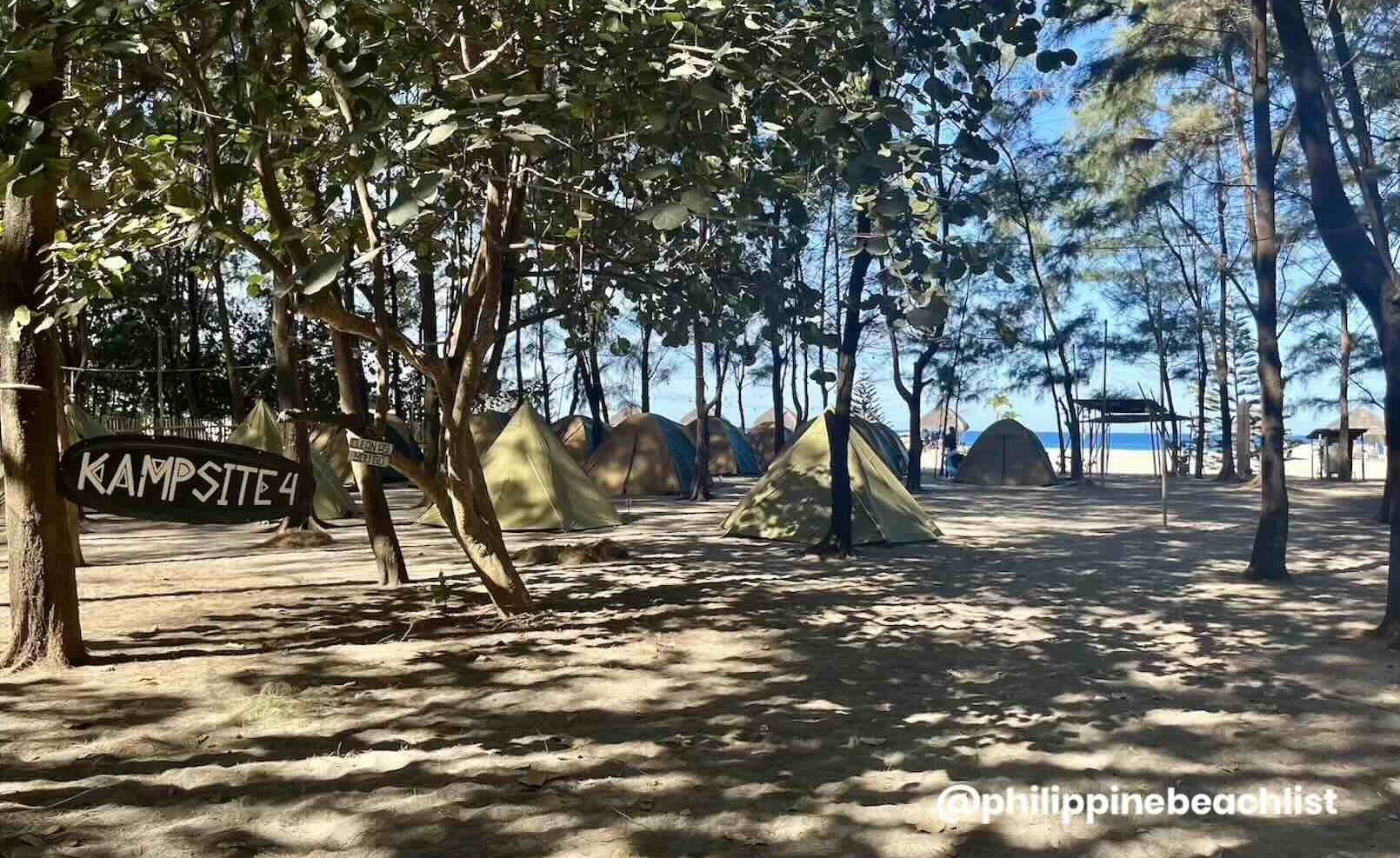
Travelers also head to the neighboring towns of San Narciso and San Felipe, which have more accommodation options. Aside from accommodations, these towns also has beautiful beaches that you can explore. The provincial capital, Iba, is also a good place to consider if you have plans to visit more places in Zambales. Below are some highly-rated accommodations that you can consider booking for your trip.
Top Hotels on Agoda
- CRYSTAL BEACH RESORT
✅ Check Rates & Availability Here! - YOUHAN BEACH RESORT
✅ Check Rates & Availability Here! - THE PENTA BEACH RESORT
✅ Check Rates & Availability Here! - FUNTASEA HOTEL AND BEACH RESORT
✅ Check Rates & Availability Here! - BOM DIA HOSTEL
✅ Check Rates & Availability Here!
Top Hotels on Booking.com
- WHITE CASTLE BEACH RESORT
✅ Check Rates & Availability Here! - MEGANS PARADISIO BEACH RESORT
✅ Check Rates & Availability Here! - PLAYA ALBA BEACH FRONT AND RESORT
✅ Check Rates & Availability Here! - THE PALMS RESORT & BAR
✅ Check Rates & Availability Here! - BAKASYUNAN RESORT AND CONFERENCE CENTER
✅ Check Rates & Availability Here!
If you want more suggestions with more details about each hotel, you can also check our Top 10 Beach Resorts in Zambales article.
Find more Zambales Hotels!
Day Tour vs Overnight Stay
Whether you’re thinking of going on a day tour or planning to stay overnight, we want to let you know through this travel guide that Nagsasa Cove is an enjoyable experience either way. Our team has tried both on different occasions and on each trip, we had a great time. It just boils down to preferences, how much time you have, and what you want to experience.
Overnight Stay
If you’re into camping or you want to experience camping for the first time, staying overnight in Nagsasa is a good idea. This also means you’ll have more time to explore the cove. You can catch both the sunset for your first night and the sunrise the next day.
Nagsasa is also a great spot to go stargazing. Aside from that, you’ll also have more time that you can spend doing an island/beach hopping tour before heading home. However, the accommodation options in Nagsasa are just basic. There are rooms you can book or you can opt to pitch a tent. Although this is not a bad thing, it can be a deal-breaker for some.
Day Tour
If you prioritize your comfort and having more amenities, you can do a day trip and just book a place to stay in Pundaquit or other areas in Zambales. You might be wondering if going on a day trip would be worth it, and in our opinion, it is! On our most recent trip, we did a day trip to the coves of San Antonio. Yes, coves because we decided to do an island hopping tour with stops at Nagsasa Cove, Anawangin Cove, Talisayen Cove, and Camara Island. However, if you want to spend more time exploring Nagsasa and its stunning surroundings, we recommend just going on a day tour there instead of beach hopping.
One thing to keep in mind when going on a day trip is that you have to be back in Pundaquit by sundown. Don’t worry if you love watching sunsets because Pundaquit has a breathtaking view of it too.
Things to do
Swimming and sunbathing.
Nagsasa has shallow waters which is perfect for swimming even for those who don’t really know how to swim. You can also just spend your time laying on the beach and savoring the views and the fresh air. If you’re swimming, make sure to be careful even if the water is shallow or the tides are low.
Stroll along the inlet.
Walk towards the southern end of the strip and you will find the shallow, scenic inlet of Nagsasa Cove.
Climb the viewpoint.
To get a better view of the cove and its surroundings, you can climb one of the hills to reach a viewpoint. Nagsasa’s viewpoint requires a short climb. Unfortunately, we weren’t able to get to the viewpoint on our recent trip since we only had limited time in Nagsasa. However, our teammates did climb up the viewpoint during their trip many years ago and their photos and videos are really breathtaking.
Island hopping.
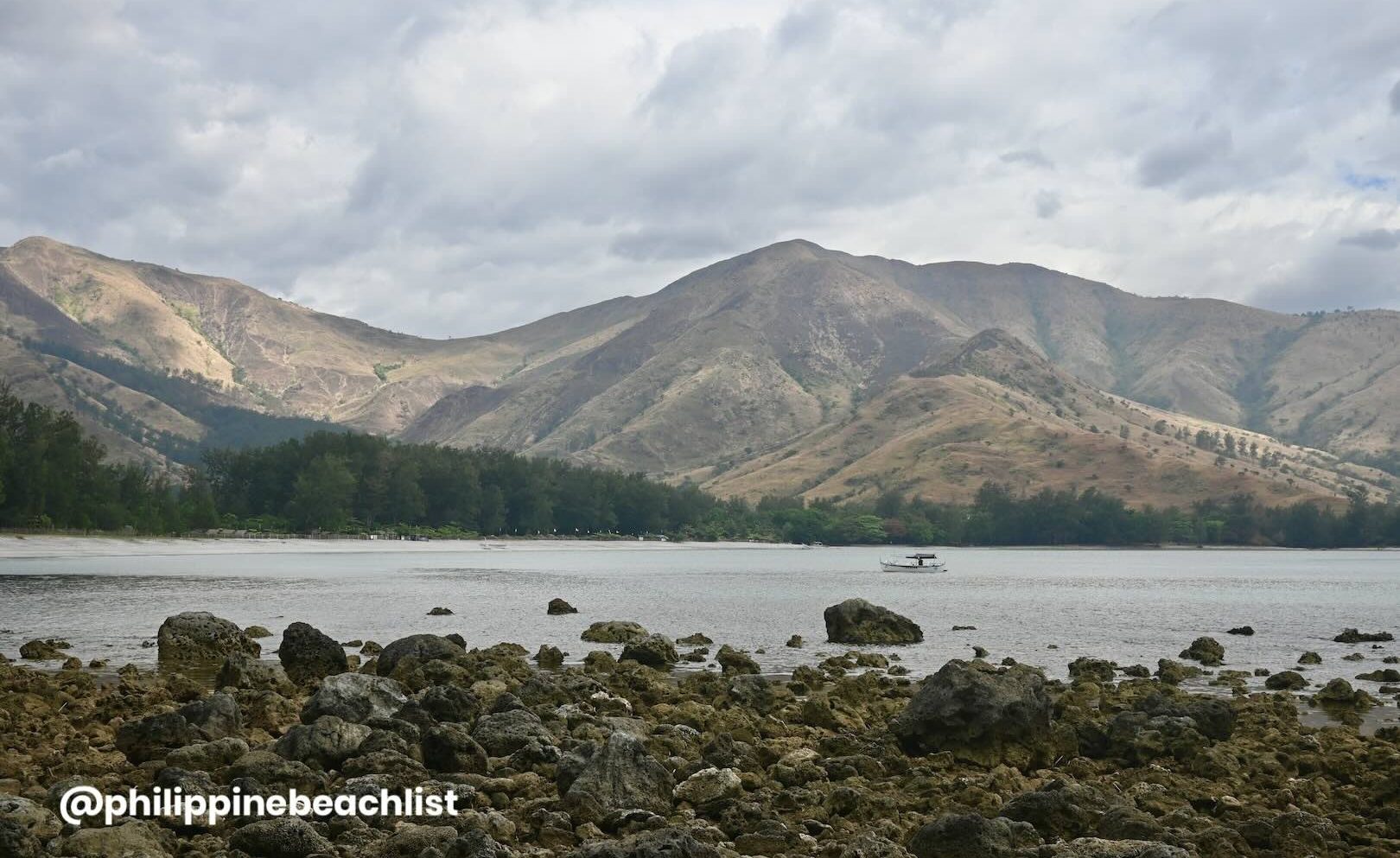
There are other nearby coves and islands in San Antonio that are as beautiful as Nagsasa. You can visit these beaches on the same trip by going on an island hopping tour. These are the stops that can be included in your itinerary: Camara Island, a small island very close to Pundaquit; Talisayen Cove, which is very similar to Anawangin and Nagsasa; and Capones Island where you can check out the lighthouse.
Go stargazing.
If you’re saying overnight, go and watch the stars at night time. Photography enthusiasts might also want to take photos of the beautiful night sky.
Where to Eat
If you haven’t figured it out yet via this travel guide, there are no restaurants in Nagsasa Cove. If you’re camping and staying overnight, the best thing you can do is go to the market before heading to Pundaquit because there are no restaurants in Nagsasa.
When you get off the bus at San Antonio, make a stop at the public market to shop. San Antonio Public Market has meat, seafood, vegetables, and other ingredients you would need to make your meal. Of course, don’t forget the rice! When you get to the cove, you can either cook it yourself or hire a local cook or paluto so they can make your meals for you.
Some packaged tours also have the option to add meals in the package so you don’t have to spend time buying ingredients and cooking. However, if you want to have a complete camping experience, go ahead and go to the market and cook your meals on the beach!
But if you’re only visiting Nagsasa on a day tour, you’ll only have limited time and you’d want to spend most of it relaxing or swimming. Your best option is to bring a ready meal and some snacks to make the most of your time on the beach. There are also places around the public market where you can get these. One of them is this restaurant across the street from the market where you can get burgers and various rice meals like fried chicken and silog. For snacks, you can go to this grocery for chips, bottled drinks, and more. You can also get street food or kakanin in the market.
Frequently Asked Questions
What Nagsasa Cove Travel Guide would be without a few frequently asked questions (and answers to these questions of course!)?
When is the best time to visit?
The dry season is usually the best time to visit most destinations in the Philippines and that includes Nagsasa. Schedule your trip between December to April because these months have less chances of rain. Of course, you wouldn’t want the rain to ruin your experience, especially if you’re going camping. However, note that Nagsasa sees more tourists around March to May, which is considered the “summer” season in the Philippines. If you can’t help but go on these months, it would be best to avoid weekends if you can because it’s typically more crowded then.
And if you want to avoid the intense heat like the current temperatures we’re experiencing, set your travel date around November to February.
Are there toilets and bathrooms for day trippers?
Yes! As we’ve noted in this travel guide, there are resorts in Nagsasa Cove, even if they may not be the fanciest ones. When you pay the entrance fee to one of the resorts in Nagsasa, you’ll have access to their toilets and shower area. However, if you’re going on a day trip, we recommend taking a shower when you’re back in Pundaquit since you might get wet on the boat ride back anyway.
That being said, ask your boatman if you could use their bathroom or if he knows a place in Pundaquit where you could shower. During our recent trip, our tour operator has a shower area they let guests use for a fee. Shower costs P20 per person.
Are there tents for rent?
Yes, but we highly suggest that you bring your own instead. If you don’t have one, you can find tents for an affordable price in sports stores or online. This might cost you a bit more now, but it will be cheaper in the long run.You can just bring your tent every time you’re going on a camping trip and pay the tent pitching fee instead of renting a tent.
Tips and Reminders
- Ensure you have enough supply of food and water. Being a secluded beach, it’s best to bring enough food and water that you would need for your trip whether you’re going for a day trip or staying overnight. Although the resort might have a small store, your options might be very limited.
- Don’t forget to apply sunscreen. Protecting your skin from the harmful sun rays is very important. We highly recommend getting a sunscreen that’s reef-safe so we can help protect the environment too.
- Bring insect repellent. If you’re staying overnight, you’d want to use an insect repellent to avoid getting mosquito bites.
- Always pack medicine and first aid kit. It’s always better to be prepared. Bring any medicine you might need and a first aid kit since you’ll be on a remote area and there’s no pharmacy or clinics here.
- See to it that you charge your phone and camera. Nagsasa is very postcard-worthy and you wouldn’t want to miss capturing that!
- Keep in mind the “Leave No Trace” principle for responsible traveling. Take Nothing But Photos, Kill Nothing But Time, Leave Nothing But Footprints! Let’s all be responsible travelers!
Sample Nagsasa Cove Itinerary
Since we wanted to make this travel guide as thorough as possible, here is a sample itinerary that you can follow for your trip to Nagsasa Cove. We included a day tour and an overnight itinerary so you can choose depending on your travel plans. Feel free to make adjustments depending on your preferences.
Day Tour Itinerary
– Arrival in San Antonio
– Shop for lunch in San Antonio Public Market
– Tricycle to Pundaquit
– Boat to Nagsasa Cove
– Pay entrance fee & rent a cottage
– Lunch
– Stroll along the inlet
– Climb the viewpoint
– Swim
– Boat to Pundaquit
– Shower
– Tricycle to San Antonio town proper
– Bus to Manila
Overnight Itinerary
Day 1
– Arrival in San Antonio
– Shop for meal ingredients in San Antonio Public Market
– Tricycle to Pundaquit
– Boat to Nagsasa Cove
– Pay entrance fee & room/tent pitching fee
– Lunch
– Stroll along the inlet
– Climb the viewpoint
– Pitch Tent
– Swim
– Dinner
– Stargazing
Day 2
– Breakfast
– Pack up
– Island hopping
– Boat to Pundaquit
– Lunch
– Tricycle to San Antonio town proper
– Bus to Manila
Updates Log
2024.06.04 – First uploaded
Related Article: Nagsasa Cove Important Tips
More Tips on YouTube ⬇️⬇️⬇️

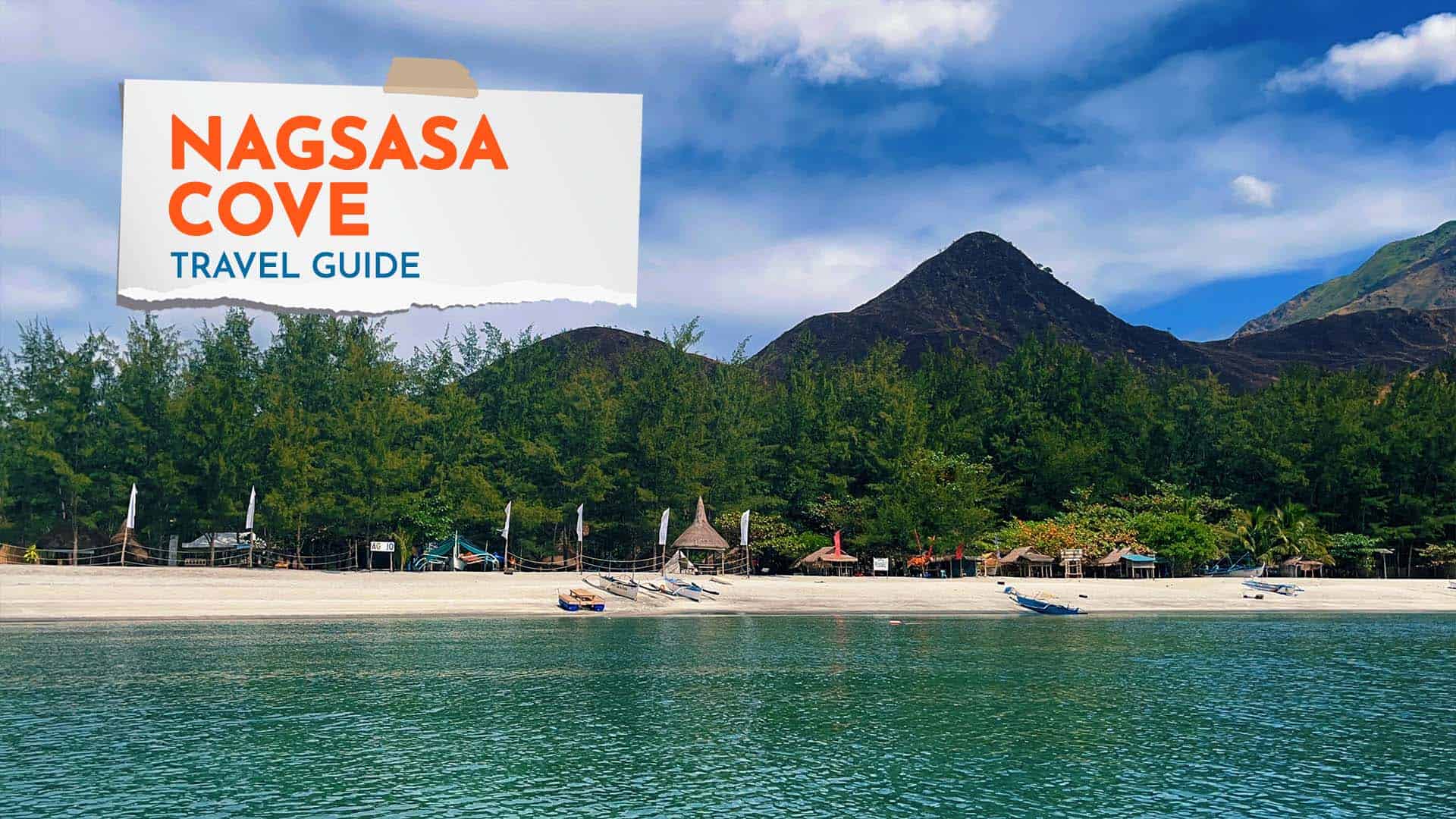

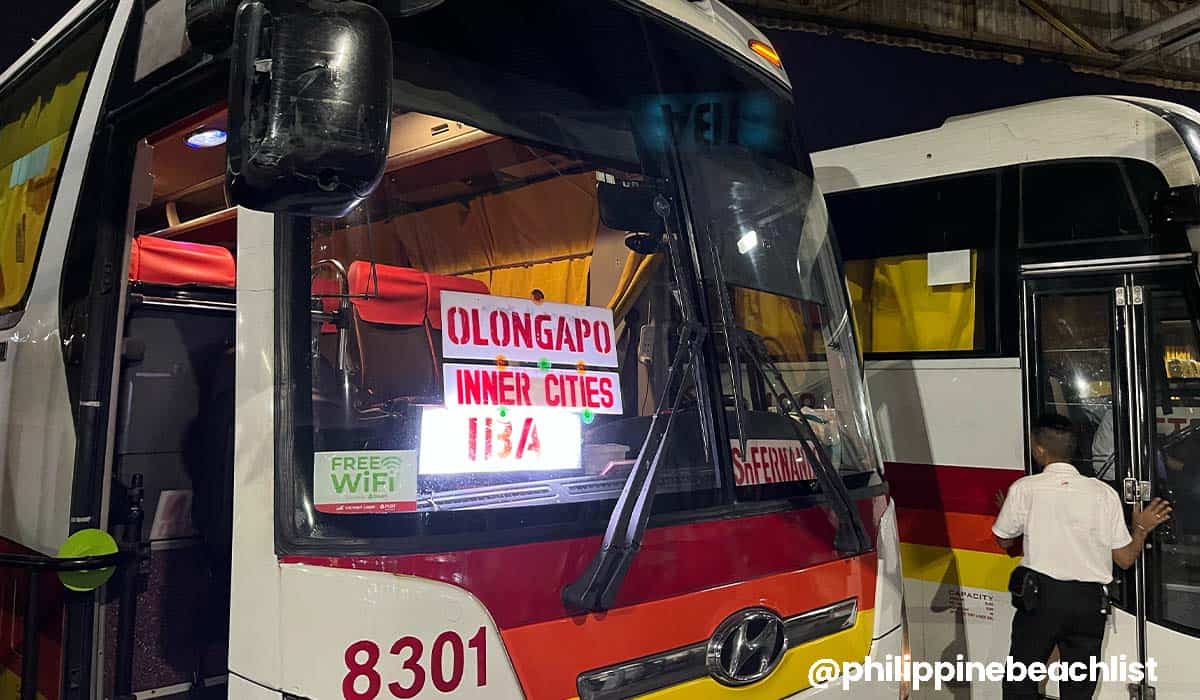
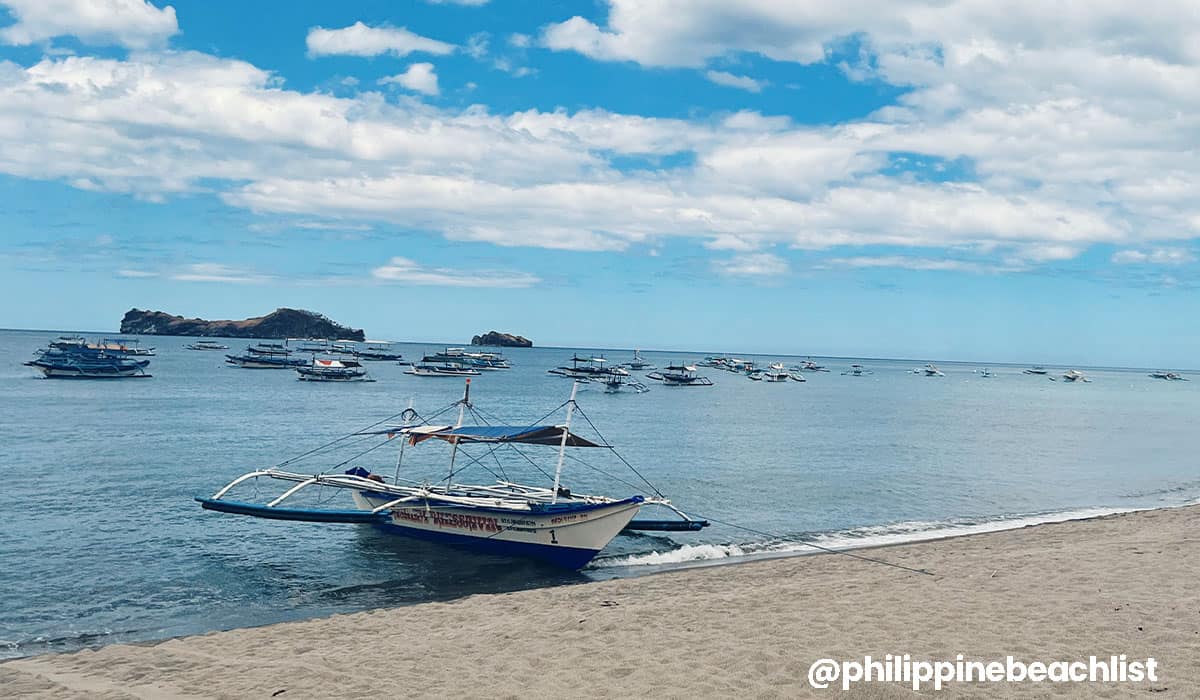
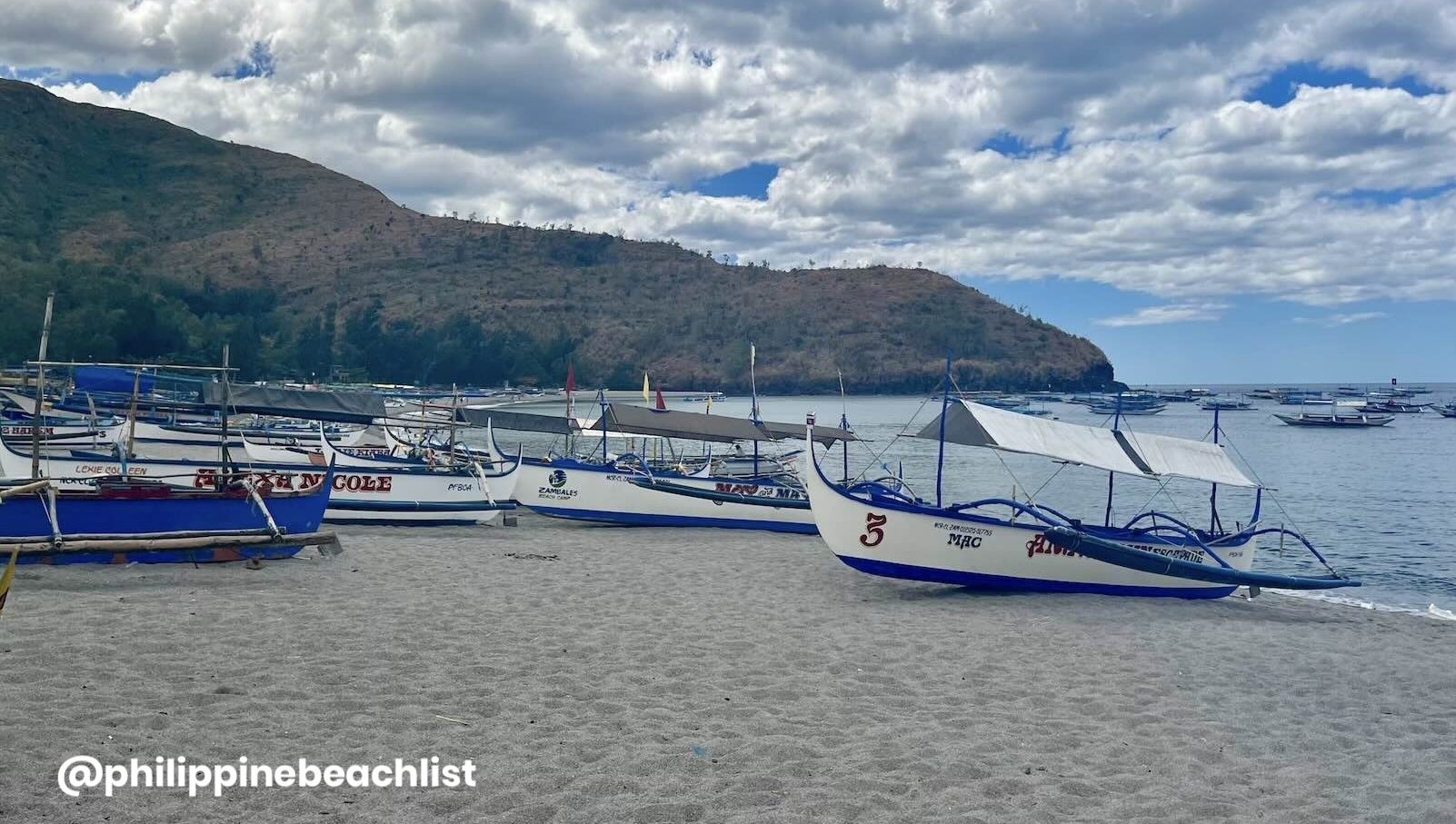

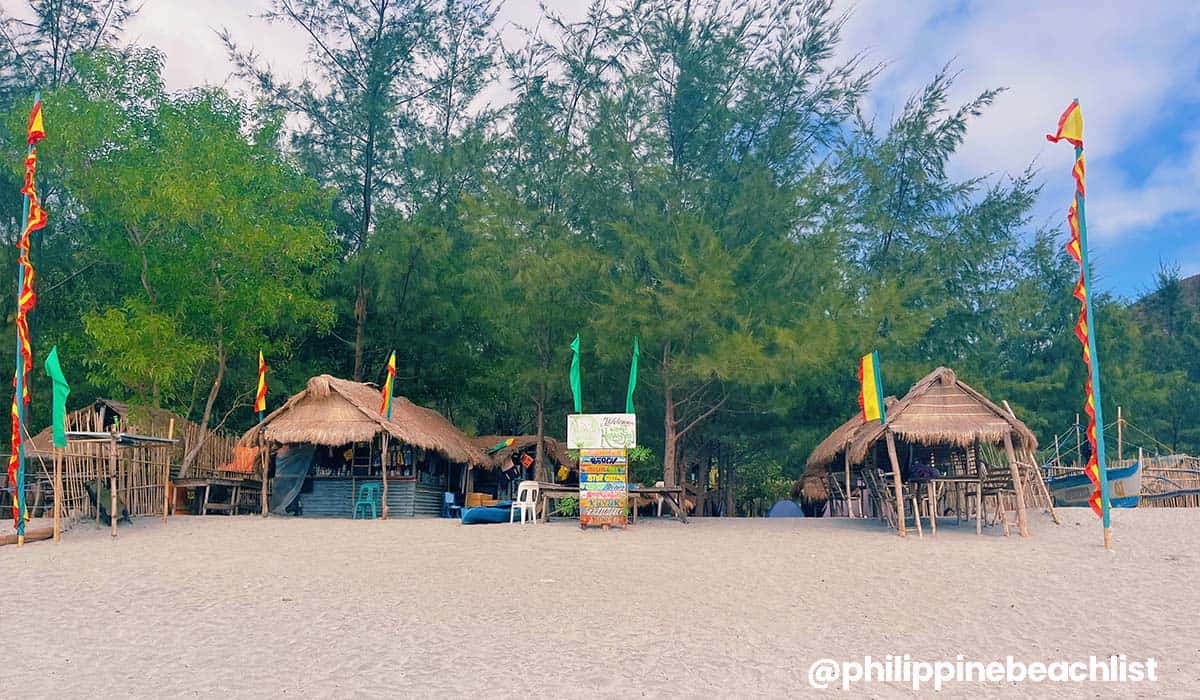
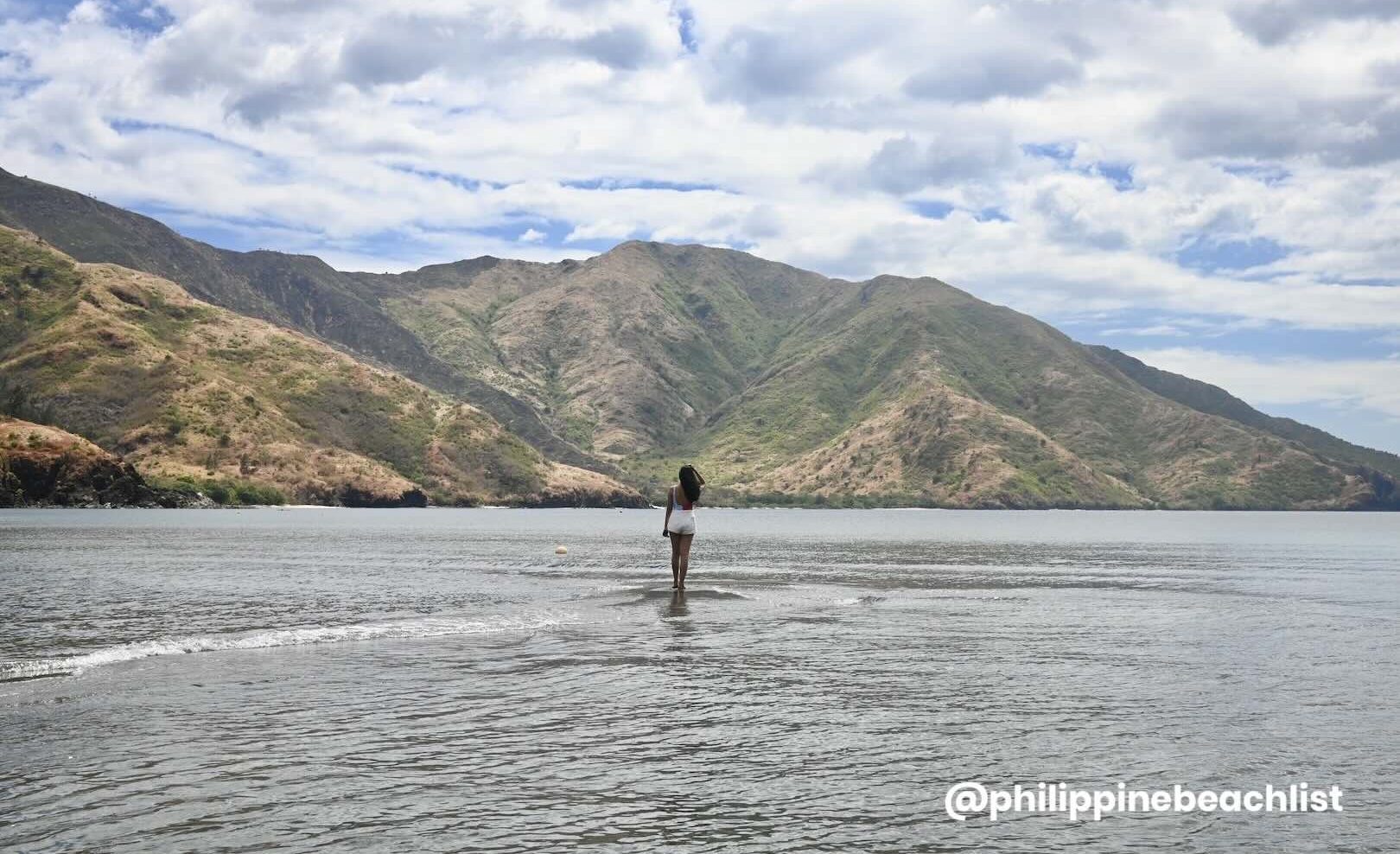
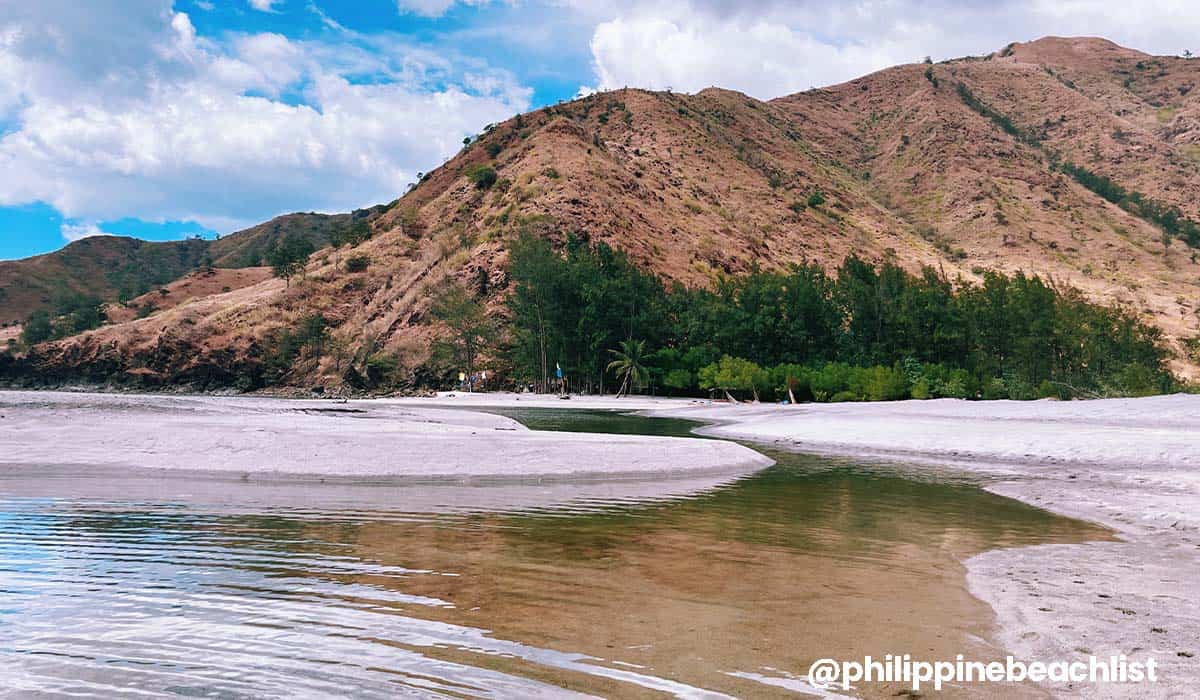
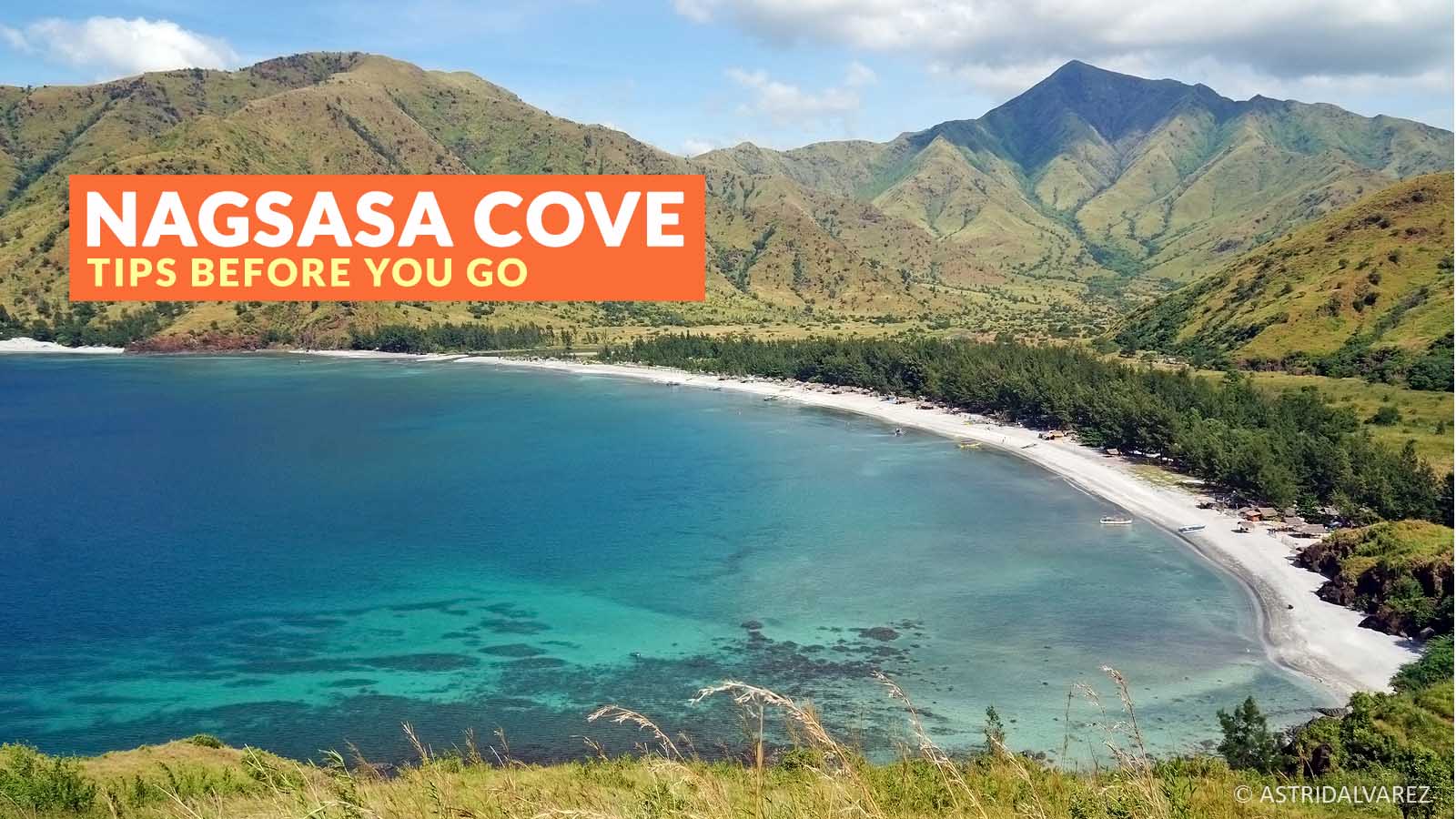
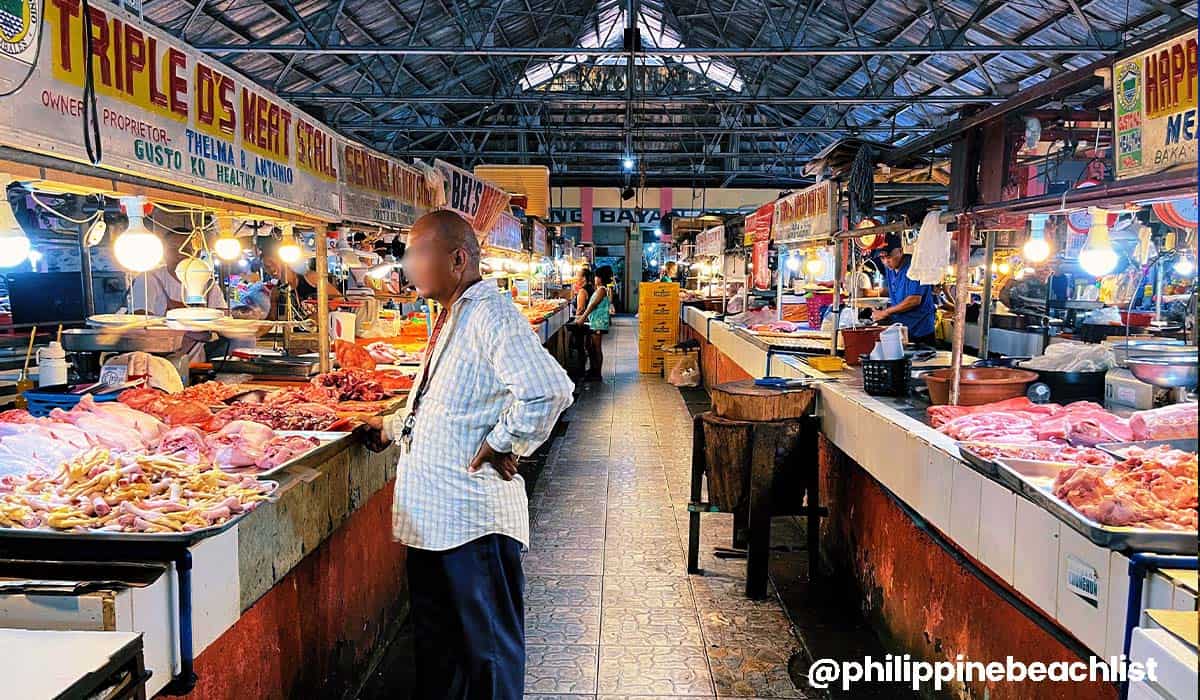
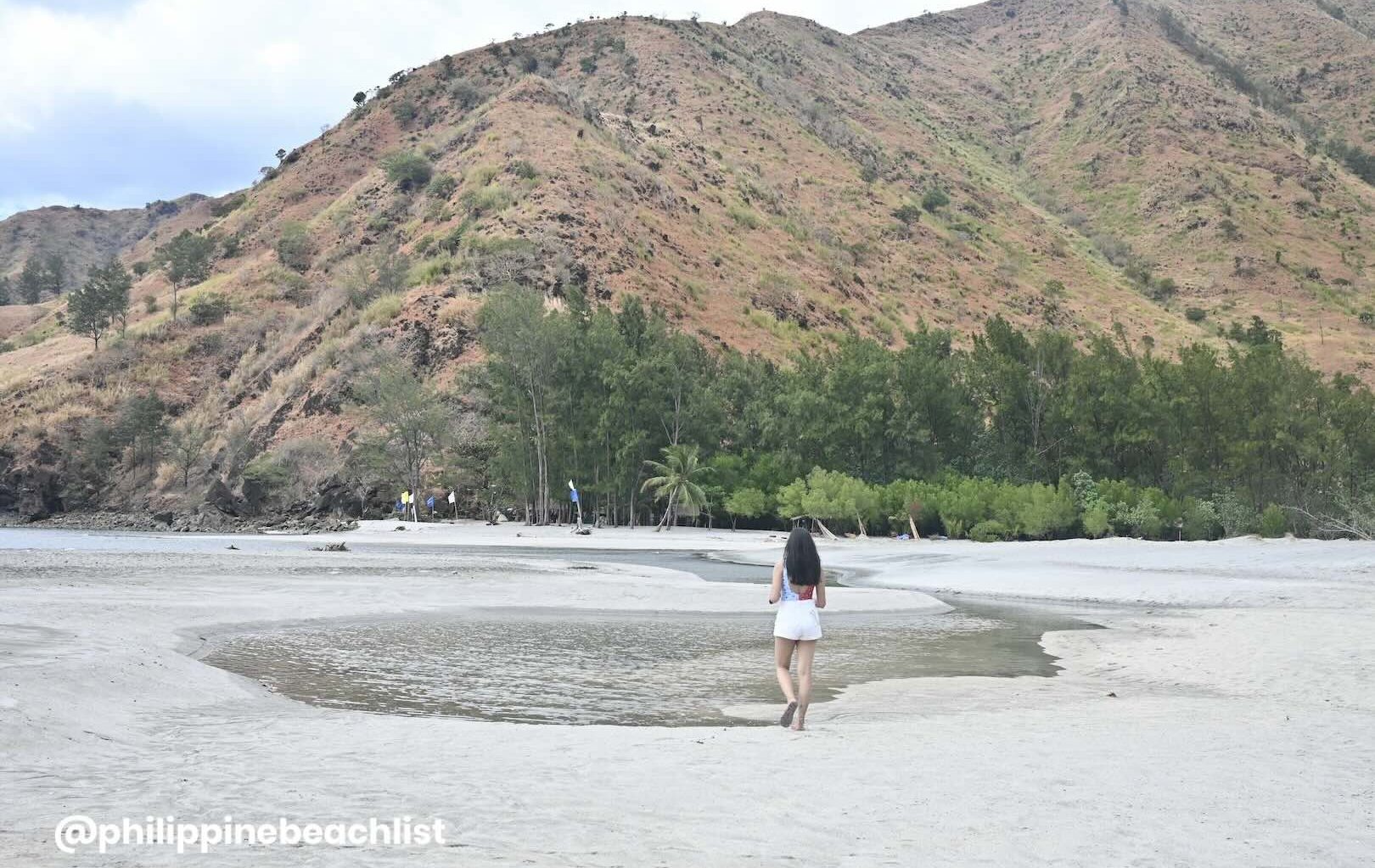
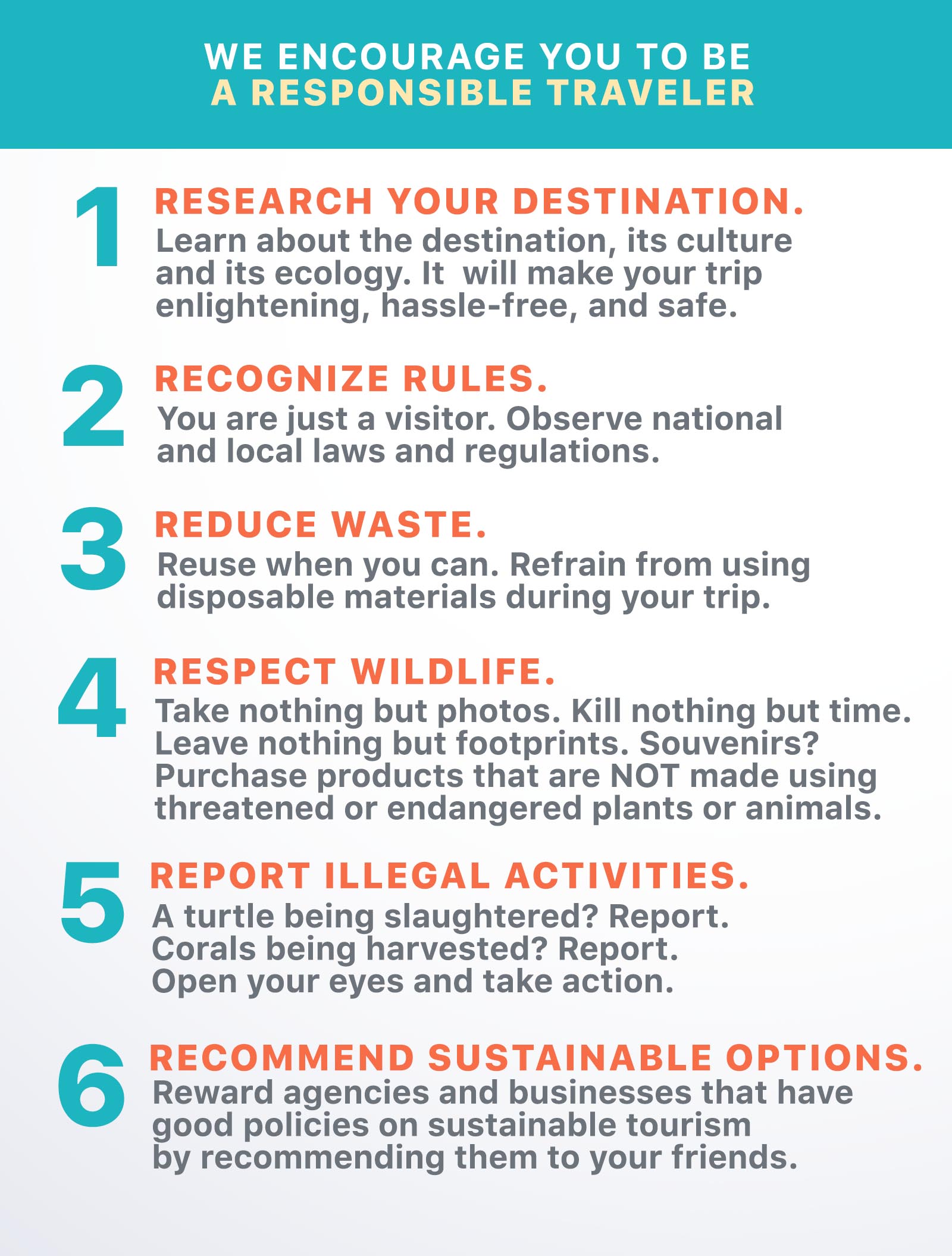
Comments